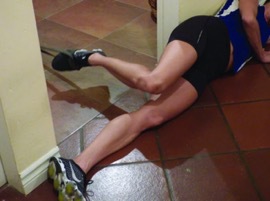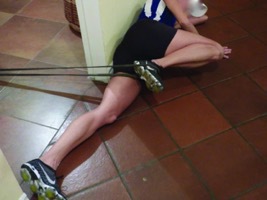Do you run with the annoyance of hip pain?
Hip pain whilst running can be very uncomfortable. There are multiple muscles that control the movement of the hip. However, hip flexor injuries are incredibly common with runners. The main hip flexor is called the iliopsoas muscle which helps accelerate and deaccelerate the hip whilst running.
What are the common symptoms?
- Pain in the upper groin area,
- Pain with resistance against the hip flexor,
- Pain when pushing on the area with your hands,
- Pain when running (or walking), usually during the swing phase of your gait (when your one leg is off the ground and swinging to make the next step forward).
What can I do about it?
Firstly, and most commonly, stretching is very important to regain flexibility and mobility in the iliopsoas muscle. It is very important that you stretch properly with the correct posture and stance to target the specific muscle. For the iliopsoas stretch, you must remember to tuck under your pelvis (pubic bone to naval) and keep your body upright before you begin to stretch the muscle.

hip flexor stretch
Secondly, using TheraBands is a good way to stretch and strengthen your hip flexors. This exercise is particularly good at elongating the iliopsoas muscle. Lie sideways on the floor with a Theraband around your one foot, go from picture one to picture two to do the motion of swing phase but without the weightbearing. Repeat this exercise 10 times on each leg.

Theraband stretch: Start Position

Theraband stretch: End position
Whilst stretching is always good for the body, it is important to get assessed and checked out by a healthcare professional (Osteopath, physiotherapist, chiropractor), so they can correctly assess your hip pain to rule out other injuries such as: tendinopathy, bursitis, an avulsion fracture, labral tear, acetabular impingement, stress fracture, referred pain from your lumbar spine or gluteal tendinopathy.
Some of these diagnoses can be aggravated and worsened by stretching, therefore it is always vital to get the all clear before stressing the hip joint.
How could an Osteopath help?
Typically, an Osteopath would assess the lower back, hip and knee joint and treat accordingly. Mobilisation of the hip joint, soft tissue treatment, muscle strengthening exercises, spinal manipulations and rehab exercises will usually be conducted.
If you would like to find out more or would like to book an appointment, then please contact us today.

